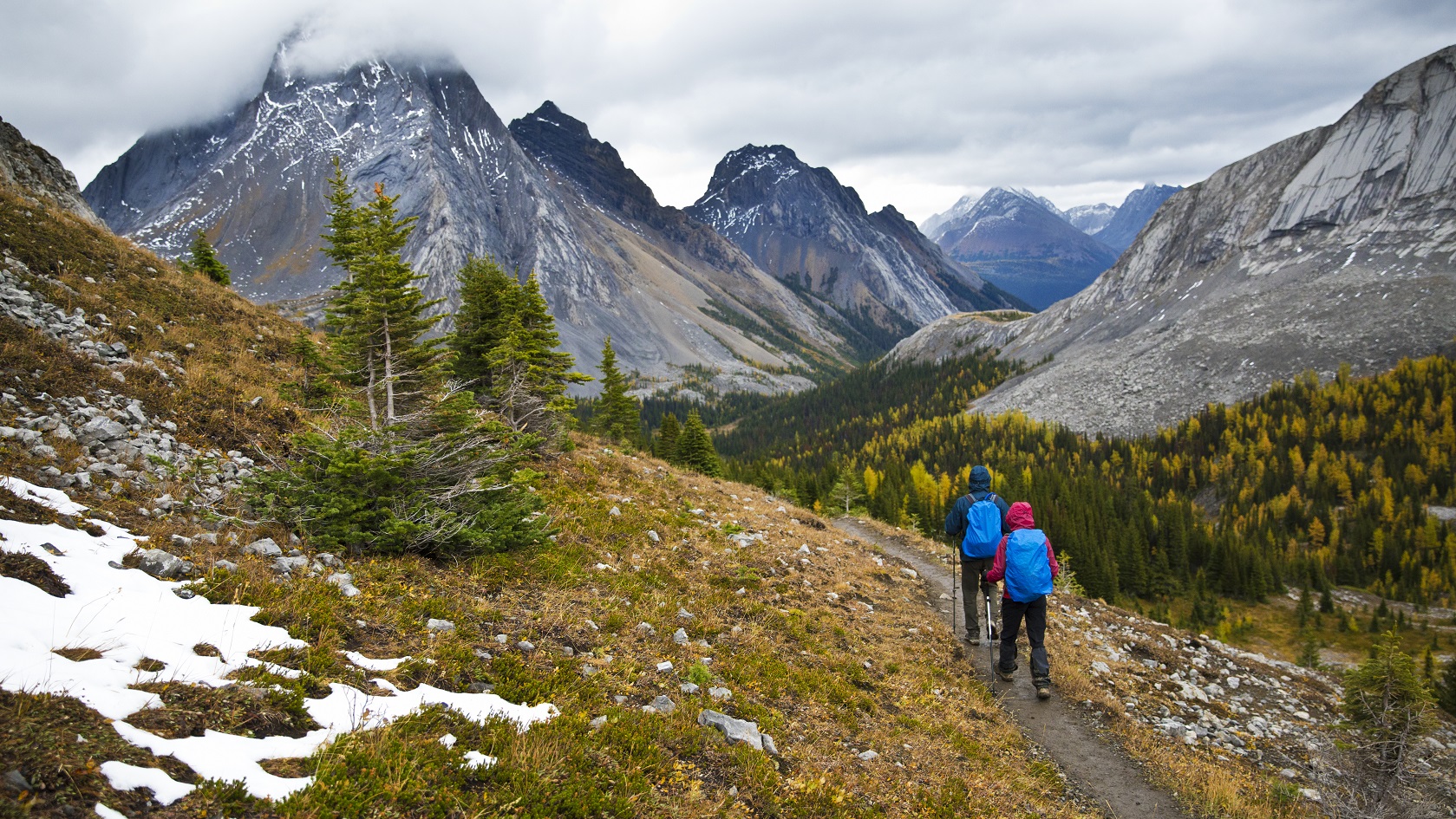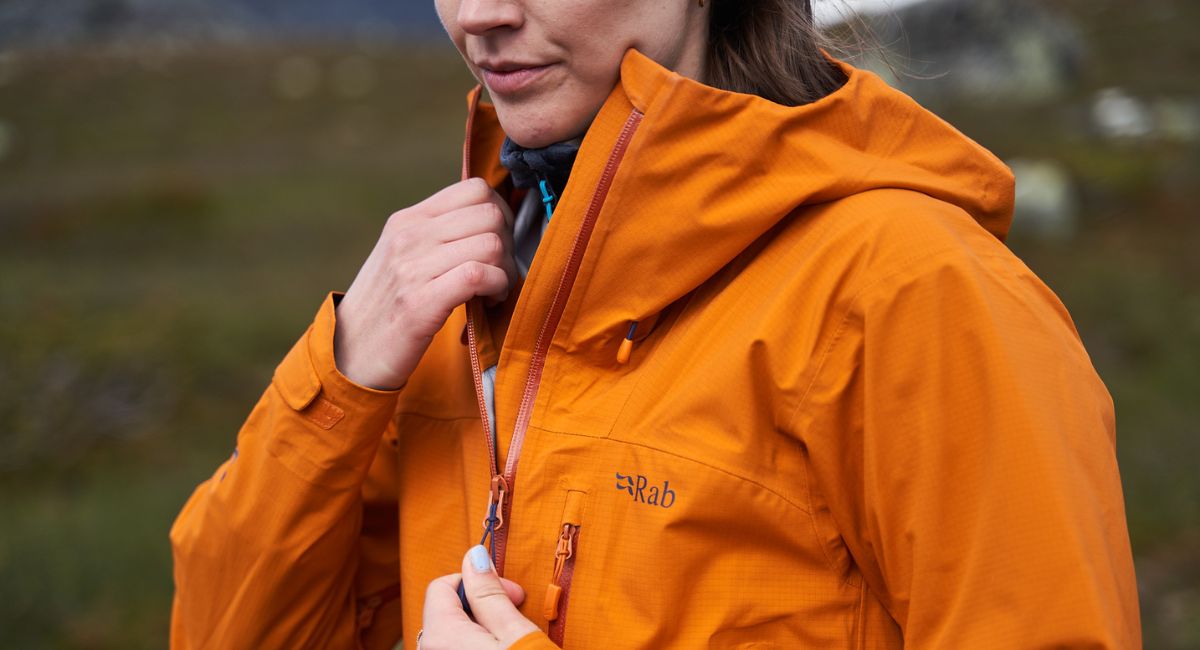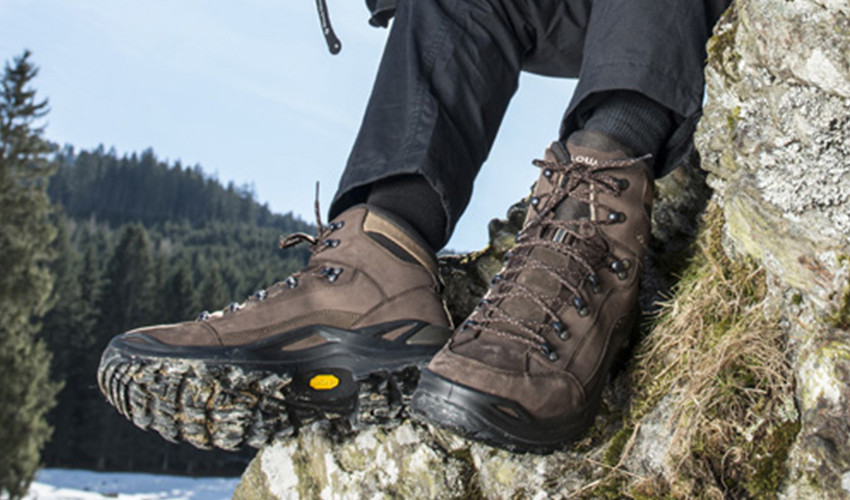Adventure doesn’t wait for the weather, and the rain shouldn’t stop you from getting outside to do what you love. Embracing the rain and heading out on a walk brings a number of unique joys – but the right kit is absolutely essential. Dressing for the weather and having the right things with you will make sure your walk is enjoyable and safe, too, so here’s our kit list for a rainy-day walk.
Essentials for Walking in the Rain

Waterproof Jackets
A quality waterproof jacket is a must-have for anyone venturing outdoors, ensuring you stay dry and comfortable no matter how heavy the downpour. Investing in a good jacket means you’ll be prepared for years of rainy adventures, whether you’re hiking, commuting, or exploring new trails.
What Makes a Great Waterproof Jacket?
Look for these key features to guarantee protection and comfort:
- Fully-Taped Seams: Essential for true waterproofing, taped seams prevent water from seeping in through stitching holes.
- Peaked, Adjustable Hood: A well-designed hood with a stiffened peak keeps rain off your face and can be adjusted for a snug fit, even in windy conditions.
- Waterproof Membranes: Technologies like GORE-TEX® offer industry-leading waterproofing and breathability, with hydrostatic head (HH) ratings often exceeding 28,000mm for top-tier protection.
- Durable Water Repellent (DWR) Coating: This treatment helps water bead off the surface, maintaining the jacket’s waterproof performance.
- Breathability: Look for jackets with high moisture vapour transmission rates (MVTR), which allow sweat to escape and keep you comfortable during activity.
- Adjustable Cuffs and Hem: These help seal out the elements and ensure a perfect fit.
- Waterproof Zips and Ventilation: Features like waterproof zippers and underarm vents add extra protection and airflow, especially during high-energy walks.
Choosing the Right Jacket for Your Needs
- Lightweight & Packable: Ideal for trail runners or those who want an emergency layer that fits easily in a backpack.
- All-Rounders: 2.5 or 3-layer constructions balance weight, durability, and protection for hiking and general outdoor use.
- Heavy-Duty Protection: For mountaineering or severe weather, opt for robust 3-layer jackets with reinforced fabrics and helmet-compatible hoods.
- Fit Matters: Your jacket should fit comfortably over layers without being too tight, allowing freedom of movement while maximising breathability.
Understanding Waterproof Ratings
- Hydrostatic Head (HH): Indicates how waterproof a fabric is-the higher the number (measured in mm), the better. For hiking, aim for at least 15,000mm HH, with 20,000mm or more for serious wet weather.
- Breathability (MVTR): Higher MVTR numbers mean better breathability, helping you stay dry from the inside out during active walks.
A reliable waterproof jacket is more than just a rain shield-it’s an investment in your comfort, safety, and enjoyment on every rainy day walk. For more details on choosing the perfect jacket, check out our comprehensive waterproof buying guide here.
Waterproof Trousers
When it comes to walking in the rain, a good pair of waterproof trousers is just as essential as your jacket. Whether you’re tackling a muddy trail, commuting in a downpour, or exploring the countryside, waterproof trousers keep you dry and comfortable, allowing you to enjoy your adventure without distraction.
Key Features to Look For:
- Fully Taped Seams: Just like jackets, taped seams are crucial to prevent water from sneaking in through stitching.
- Breathable Fabrics: Look for trousers made with breathable membranes (such as GORE-TEX® or similar technologies) to stop you feeling clammy during active walks.
- Adjustable Waistbands: An adjustable fit ensures comfort over different layers and prevents water from seeping in.
- Ankle Zips or Full-Length Side Zips: These make it easy to pull the trousers on or off over boots, especially when the weather changes quickly.
- Lightweight and Packable: Many waterproof trousers are designed to pack down small, making them easy to stash in your backpack until needed.
- Articulated Knees: For better freedom of movement, especially on rough or steep terrain.
- Reinforced Areas: Extra durability in high-wear zones like the seat and knees, ideal for scrambling or sitting on wet surfaces.
Why Waterproof Trousers Are Essential:
- Complete Protection: Paired with a waterproof jacket, trousers ensure you stay dry from head to toe, even in torrential rain.
- Versatile Layering: Wear them over walking trousers or leggings for instant weather protection.
- Comfort in All Conditions: No more soggy legs or wet socks-waterproof trousers help regulate your temperature and keep you comfortable, no matter how long you’re out.
- Easy to Carry: Modern designs are lightweight and can be packed away until the rain starts, so you’re always prepared.
Choosing the Right Pair
Consider how and where you’ll use your waterproof trousers:
- For short walks or city commutes, lightweight and packable options are ideal.
- For mountain hikes or multi-day adventures, choose more robust, feature-rich trousers with high waterproof ratings and reinforced panels.
- Make sure the fit allows for layering underneath and doesn’t restrict your movement.
Don’t let wet weather put a damper on your plans. With the right waterproof trousers, you’ll be ready to embrace every rainy walk in comfort and style.

Base Layers
A good base layer sits directly against your skin and is designed to manage moisture. When you’re active, your body produces sweat-even in cold or rainy conditions. The right base layer will wick this moisture away, keeping you dry and preventing chills.
Key Features of Effective Base Layers:
- Moisture-Wicking: Materials like merino wool or synthetic fibres (such as polyester) draw sweat away from your skin.
- Quick-Drying: Helps you stay comfortable even if your outer layers get damp.
- Lightweight and Breathable: Ensures you don’t overheat during high-energy walks.
- Odour-Resistant: Merino wool is naturally odour-resistant, making it ideal for multi-day adventures.
Why Base Layers Matter:
- Prevents the uncomfortable, clammy feeling of wet clothing.
- Helps regulate your body temperature by moving sweat away from your skin.
- Reduces the risk of chafing and irritation during long walks.
Midlayers
Your midlayer sits between your base layer and waterproof outer shell. Its main job is to trap body heat while allowing excess moisture to escape, so you stay warm without overheating.
Popular Midlayer Options:
- Fleece Jackets: Lightweight, breathable, and quick-drying-great for most conditions.
- Lightweight Insulated Jackets: Synthetic or down insulation offers extra warmth for colder days.
- Softshell Jackets: Provide a balance of warmth, breathability, and some water resistance for milder wet weather.
Key Features to Look For:
- Breathability: Allows sweat to escape, preventing you from getting damp inside your jacket.
- Lightweight and Packable: Easy to add or remove layers as the weather changes.
- Stretch and Comfort: Look for midlayers that move with you for unrestricted walking.
Why Midlayers Are Essential:
- Trap warmth close to your body, keeping you comfortable in changing conditions.
- Can be layered up or down depending on the temperature and your activity level.
- Add versatility to your outdoor wardrobe, making it easy to adapt to unpredictable weather.
Layer Up for Success
Combining a moisture-wicking base layer with an insulating midlayer and a waterproof outer shell creates a flexible system that keeps you dry, warm, and comfortable on any rainy walk. Don’t underestimate the power of good layering-it’s the secret to enjoying the outdoors, whatever the weather.
Waterproof Footwear
When walking in the rain, your choice of footwear can make or break your experience. Wet, cold feet can quickly turn an enjoyable walk into an uncomfortable slog, so investing in quality waterproof footwear is essential for anyone who loves the outdoors.
Waterproof walking boots are designed to keep your feet dry, warm, and supported, even in the wettest conditions. The key to their effectiveness lies in their construction and the technology used in their membranes.
Key Features of Waterproof Walking Boots:
- Breathable Membrane: Technologies like GORE-TEX®, eVent®, or proprietary waterproof membranes allow sweat to escape while preventing rain and puddle water from getting in, keeping your feet dry from both the outside and inside.
- Durable Outer Materials: Leather or synthetic uppers are treated to repel water and stand up to rough, muddy conditions.
- Supportive Soles: Grippy, lugged soles provide traction on slippery surfaces, reducing the risk of slips and falls.
- Comfortable Fit: A good fit prevents blisters and ensures comfort over long distances, even when your boots are wet on the outside.
- Protective Toe Caps and Heel Guards: These features help shield your feet from knocks, stones, and debris often encountered on wet, uneven trails.
Gaiters
For particularly muddy or splashy conditions, gaiters are a smart addition to your rainy day kit. They cover the gap between your boots and trousers, providing an extra barrier against water, mud, and debris.
Benefits of Wearing Gaiters:
- Keeps Water Out: Prevents rain, puddle splashes, and even snow from seeping into the tops of your boots.
- Blocks Mud and Debris: Stops grit, stones, and twigs from getting inside your footwear, which can cause discomfort and blisters.
- Easy to Use: Most gaiters are quick to put on and take off, and can be adjusted for a snug fit around your calves and ankles.
Tips for Choosing the Right Waterproof Footwear
- Consider Your Activity: Lightweight waterproof shoes are great for short walks or urban adventures, while sturdy boots offer better support and protection for longer hikes and rough terrain.
- Check the Fit: Always try on boots with the socks you plan to wear, and ensure there’s enough room for your toes to move.
- Look for Breathability: A breathable membrane is crucial for comfort, especially during longer or more strenuous walks.
- Don’t Forget Maintenance: Regularly clean and reproof your boots to maintain their waterproof performance and extend their lifespan.

Waterproof Accessories
When you’re out walking in the rain, keeping yourself dry is only half the challenge-protecting your gear is just as important. Waterproof accessories like dry bags and rain covers are essential for ensuring your valuables, electronics, and spare clothes stay safe and dry, no matter how heavy the downpour.
Dry Bags
Dry bags are a simple but highly effective way to protect your belongings from water. Whether you’re carrying a phone, camera, spare socks, or snacks, a dry bag gives you peace of mind that your essentials will stay dry even in the wettest conditions.
Benefits of Dry Bags:
- 100% Waterproof: Made from tough, waterproof materials with roll-top closures that seal out water completely.
- Versatile Sizes: Available in a range of sizes, from small pouches for electronics to large bags for clothing and sleeping bags.
- Lightweight and Packable: Easy to stash in your rucksack and add minimal weight to your kit.
- Organisational Aid: Use different coloured bags to organise your gear, making it easy to find what you need quickly.
Rain Covers
Even the most water-resistant backpacks can let in moisture during prolonged rain. A rain cover is a lightweight, packable accessory that slips over your backpack to provide an extra layer of protection.
Why Use a Rain Cover?
- Quick and Easy Protection: Fits snugly over your pack, shielding it from rain, mud, and splashes.
- Universal Fit: Most rain covers are adjustable and available in various sizes to fit daypacks and larger hiking rucksacks.
- Compact Storage: Packs down small when not in use, so you can always have it on hand.
- Added Visibility: Many rain covers come in bright colours or with reflective details, helping you stay visible in low-light conditions.
Other Handy Waterproof Accessories
- Waterproof Phone Cases: Essential for navigation and emergency contact, these cases allow you to use your device without exposing it to the elements.
- Map Cases: Keep your maps dry and readable, even in torrential rain.
- Waterproof Pouches: Perfect for storing wallets, keys, and other small valuables.
Why Waterproof Accessories Matter
- Peace of Mind: No more worrying about soaked electronics, ruined maps, or soggy snacks.
- Prepared for Anything: Be ready for sudden downpours or river crossings without scrambling to protect your gear.
- Extend the Life of Your Equipment: Keeping your kit dry helps prevent damage and prolongs its lifespan.
With the right waterproof accessories, you can walk in the rain knowing your gear is as protected as you are.
Walking in the rain is an adventure that rewards preparation and knowledge. With the right essentials, expert tips, and a positive mindset, you can enjoy the outdoors in any weather.
Walking in Wet Weather FAQs
Choose a waterproof jacket with a hood, quick-drying trousers, and waterproof footwear. Layer with moisture-wicking clothing underneath to keep sweat away from your skin. Don’t forget accessories like a hat, gloves, and a compact umbrella for extra protection.
Wear waterproof walking boots or shoes with sealed seams, and pair them with moisture-wicking or merino wool socks. Consider using gaiters to keep water from entering at the ankle, and bring an extra pair of socks to change if needed.
Always check the weather forecast before heading out. Wear bright or reflective gear for visibility, avoid flooded paths, and be cautious of slippery surfaces. Let someone know your route and carry a fully charged phone for emergencies.
Pack a lightweight waterproof backpack cover, spare socks, a microfiber towel, and a dry bag for electronics. Bring snacks, water, and a small first aid kit. If you plan a longer walk, include a map or GPS device in case your phone loses signal.
Use waterproof pouches or dry bags for your phone, wallet, and other valuables. Store them inside your backpack, ideally in a separate compartment, to prevent accidental leaks from reaching your items.
Related Articles

Let us know you agree to cookies
We use marketing, analytical and functional cookies as well as similar technologies to give you the best experience. Third parties, including social media platforms, often place tracking cookies on our site to show you personalised adverts outside of our website.
We store your cookie preferences for two years and you can edit your preferences via ‘manage cookies’ or through the cookie policy at the bottom of every page. For more information, please see our cookie policy.




